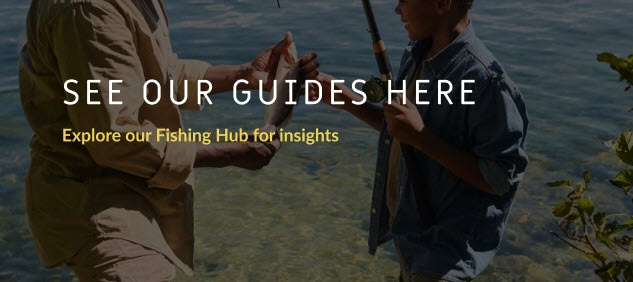explore kentucky lake fishing
In 2019, Paula Smith caught an 88-pound catfish in Humphreys County. Humphreys County has some of the best bass and catfish habitats in the world. Since big fish produce more fish and have great DNA, their presence is the first sign of a great fishing area.

TENNESSEE FISHING LICENSE
Unless posted otherwise, assume all fishing in Humphreys County requires a valid Tennessee Fishing license. Here are some options for acquiring the appropriate license. All links open a new tab.


History and Stats of Kentucky Lake
The Tennessee Valley Authority began construction of the Kentucky Dam in 1938, and it was completed in 1944. At 184 miles long, with more than 2000 miles of shoreline, the lake is the largest man-made lake east of the Mississippi.
The formation of the lake in 1945 flooded the town of Johnsonville in Humphreys County. Therefore much of the Battle of Johnsonville lies below the water. Nevertheless, the Johnsonville State Historic Park is highly informative and offers shoreline access to the lake as well as re-enactments, a museum, walking trails, scenic views and more.
The lake’s creation also gave the entire Tennessee Valley access to the Ohio and Mississippi Rivers, and the Kentucky Lock is the busiest lock east of the Mississippi River. Barges and river traffic from the Ohio River can also access the Gulf Mexico by going through Kentucky Lake to the Tennessee-Tombigbee Waterway and on to the port of Mobile.
The Natural Beauty of Kentucky Lake
Kentucky Lake is a great place to go fishing and boating. Although the dam is 206 feet high, the typical maximum depth is only about 35 feet and the difference between summer and winter pool is only about 6 feet.
The lake has a very natural appearance because development is not allowed without permits. The largest town on the lake has fewer than 10,000 people. The Tennessee National Wildlife Refuge occupies much of the shoreline in and near Humphreys County from near the I-40 bridge to just south of New Johnsonville. The refuge dramatically increases the availability of duck and other migratory birds and contributes to better fishing as well.


Lake Ecology for Fishing
Kentucky Lake and the Tennessee River were home to a thriving freshwater mussel business for many years. Prior to the 1930 and the invention of plastic, the harvested mussel shells were used to make buttons and even cultured pearls. Since freshwater mussels move very slowly at best and like cleaner cool water, they prefer to grow in areas that are at least slightly elevated and possibly scoured by current, such as an old roadbed, an exposed building foundation, the edges of the original river channel or even low hilltops now flooded by the lake.
The mussel beds are one of the features that attract fish. Mussels do not have a mechanism to clean their shells. The outer layer of the shell actually protects the calcium carbonate core of the shell from acids and other chemicals. Small fish congregate to feed on the algae, insects, and even plants that attach themselves to the mussel shells. The big fish come to have dinner on the small fish. Some small fish can even use the old shells as nesting sites.

Places to Find Bream
The best places to look for Bream (Bluegill, Sunfish, and Redear) between May and July are the coves for the major creek tributaries and areas upstream. Blue Creek near Cuba landing is one good spot. So is the Duck River, and the New Johnsonville steam plant. Bream like moderate vegetation, gravel beds, and rocks or submerged wood.


WHERE TO LOOK FOR CRAPPIE
Kentucky Lake has a good supply of both black and white crappie. They feed on gizzard and threadfin shad. In late March and early April, they move to the shallow areas, such as the coves and flooded bottomlands. They love buttonball bushes, stake beds, and brush piles. There are several of these attractors near the Johnsonville State Historic Park cove. During the summer, many will move to deeper water along old channels and flats, while others will remain in the shallows.
Places to Find CATFISH
Some folks consider catfish to be a bigger challenge to reel in than bass. They are not just sluggish bottom feeders. They can also be huge, like the 88-pound catfish. Paula Smith caught near the Duck River Unit of the Tennessee Wildlife Refuge. Catfish are omnivores, which means they eat other fish as well as plants. Smelly baits, like cut fish, make for a good catch.
Generally they are often found at depths in the old river and creek channels, especially in winter and when the water temperature is over 70 degrees. The Duck River and Tennessee River Channels are the deepest areas for the Humphreys County area. They spawn in shallow water in rocky areas when the water reaches about 60 degrees in the spring. When the water temperature dips near 70 in fall, they may make a return trip to shallow areas as they follow baitfish.


Bass Fishing in Kentucky Lake
The bass prefer to eat threadfin and gizzard shad, but they will eat other animals and fish that move—even small lizards if they land in the water. The large and smallmouth bass are often in the deeper channels, such as the Tennessee River and the Duck River and the ledges near them and at the mouths of bays. Smallmouth bass tend to be more active in the winter than the largemouth since smallmouth tolerate cold better.
When the water reaches the low 60s in about mid-April, the smallmouth move to the shallow, rocky areas to spawn. The largemouth wait until the water reaches the mid 60s to low 70s a couple of weeks later. During spawning, the females do not eat as much and are harder to catch. The males will guard the nest and fry for a week or so before moving on as well.
Corps of Engineers Nautical Charts for the Tennessee River
The Corp of Engineers has downloadable pdfs showing the navigable channel on Kentucky Lake. The deepest water is generally the whitest patches on the map. Humphreys County is included on maps 14-19.

Check out our Travel Guides
Stay up to date on events, offers, and the latest our fine county has to offer you!

